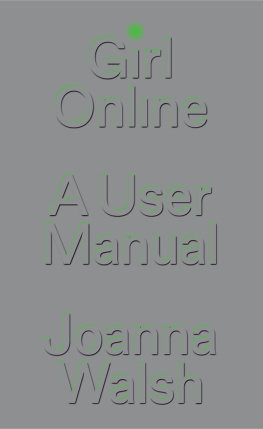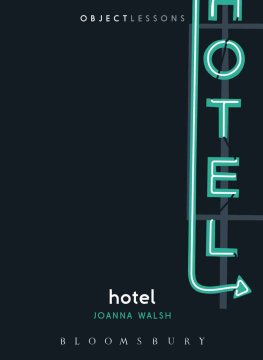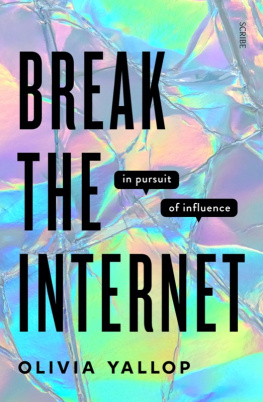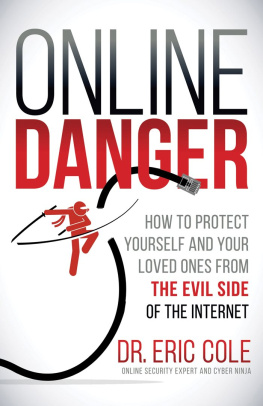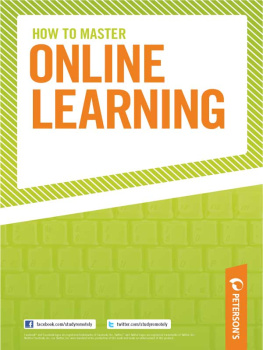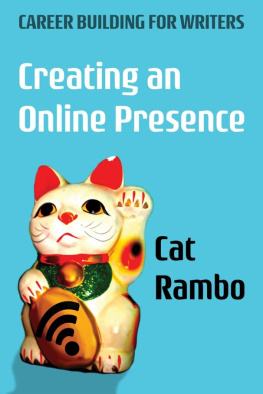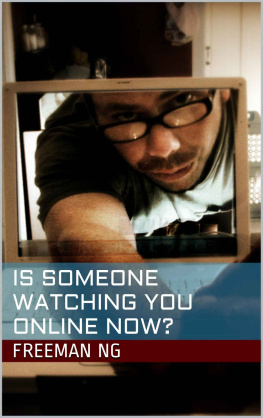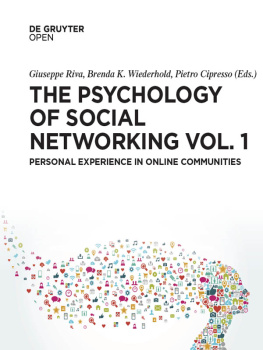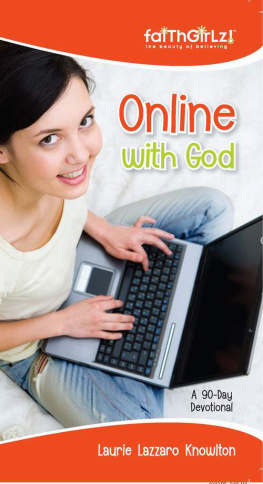Contents
- Thought Experiment #9: Experimental
Evidence of Massive-Scale Emotional Contagion through Social Networks

Girl Online
Girl Online
A User Manual
Joanna Walsh

First published by Verso 2022
Joanna Walsh 2022
All rights reserved
The moral rights of the author have been asserted
1 3 5 7 9 10 8 6 4 2
Verso
UK: 6 Meard Street, London W1F 0EG
US: 388 Atlantic Avenue, Brooklyn, NY 11217
versobooks.com
Verso is the imprint of New Left Books
ISBN-13: 978-1-83976-535-3
ISBN-13: 978-1-83976-537-7 (UK EBK)
ISBN-13: 978-1-83976-538-4 (US EBK)
British Library Cataloguing in Publication Data
A catalogue record for this book is available from the British Library
Library of Congress Cataloging-in-Publication Data
Names: Walsh, Joanna, author.
Title: Girl online : a user manual / Joanna Walsh.
Description: First Edition Hardback. | Brooklyn, NY : Verso, 2022. | Includes bibliographical references.
Identifiers: LCCN 2021061656 (print) | LCCN
2021061657 (ebook) | ISBN
9781839765353 (Hardback) | ISBN 9781839765384 (eBook)
Subjects: LCSH: WomenIdentity. | Online identities. | Identity (Psychology) | TechnologySocial aspects.
Classification: LCC HQ1206 .W233 2022 (print)
| LCC HQ1206 (ebook) | DDC 303.48/3082dc23/eng/20220125
LC record available at https://lccn.loc.gov/2021061656
LC ebook record available at https://lccn.loc.gov/2021061657
Typeset in Sabon by Hewer Text UK Ltd, Edinburgh
Printed and bound by CPI Group (UK) Ltd, Croydon CR0 4YY
There are no girls on the internet.
The Rules of the Internet, Usenet, c. early 2000s
This book is a user manual.
This book is a virtual manifesto for manual workers.
This book is a work of literary criticism.
This book is a forum post.
This book is a memoir of motherhood.
This book is a historical novel about the internet in the 2000s.
This book is a work of feminist autotheory.
This book is a blog.
This book is a thought experiment.
This book is chick lit.
This book is a piece of code.
To read this book ideally, it is necessary to read all the words in it simultaneously. To read this book, it is necessary to hyperlink. The ideal reader of this book is the internet.
Contents
Thought Experiment #9: Experimental
Evidence of Massive-Scale Emotional Contagion through Social Networks
I hope you understand what thinking in chorus meansfor I must confess that I dont.
Lewis Carroll, Through the Looking-Glass
Functionalists hold that mental states are defined by the causal role they play in a system.In the Chinese Nation thought experiment, pain is a point in time. It occurs when enough components say it does.
Say theres a woman working alone in a room at a screen and the screen screens her privacythe privacy she also is. She is sitting in front of logic gates that have not yet closed behind her. Lets say this logic gate is a pain switch.
In programming, a logic gate has a single binary function. From a dual input it produces a single output. It does this by way of conjunctions, like AND, which has the symbol , or OR, which has the symbolwhich is a non-exclusive orand XOR, which is an exclusive or, where only one thing is true, or the other. This switchs XOR logic gate is PAIN/NOTPAIN. The pain is not any specific sort, physical or mental; it is the pain the woman is feeling. Any sort of pain may go through the gate so long as she is willing to call it pain.
Say there are enough women sitting alone, each in a room, each in front of a logic gate. Say their switches form a system and if enough switches flip at the same time, something exists that can be called pain. If enough women sitting in front of enough screens flip the pain switch, will pain have been felt? And how many is enough?
If enough women flip enough switches to cause pain, where is this pain located? Is it located in each woman, her particular pain, or is it located in the system? If it is located in the system, in what sense can the system be said to feel pain? How many women in front of how many screens must make the decision to flip the switch before the system can be said to be in pain? And how much in pain does the system have to be in order that the pain of the women be acknowledged? In what part is pain allowed to each of the women, and is it evenly distributed yet if some of the women are more in pain than others but each has only one switch?
What about the pain caused by making the decision to flip the pain switch or not? This might be a slight pain, pain as by-product, or might be a major part of the pain, or greater than the pain registered.
Does the amount of pain each woman feels change once the woman feels herself to be part of a system? In her prison memoir, the writer and activist Margaretta DArcy describes how women political prisoners dealt with pain that might otherwise cause them to go under.They dealt with it as a system. They mentioned the incidence of pain to each other in strictly unemotional terms, like flipping a switch. Thus, the pain was dispersed as a system across space and time.
The effect of switches flipped is felt across the system, but each woman sitting in front of a screen makes the decision to flip the switch alone. No woman knows what difference her decision will make. Any woman may refuse to flip the switch and choose instead a default screen face that does not look like it has undergone any pain whatsoever, which is the most fortunate female interface, the face of a girl online.
To lay claim to pain is to lay claim to experience. It is also to have the option to claim experience only as pain. Flip the switch togethergain powerclaim pain. Flip the switch aloneclaim painlose face: a prisoners dilemma. To save face, there is something to be said for staying in front of the logic gate refusing to go in.
How nice it would be if we could only get through into Looking-glass House! Im sure its got, oh! such beautiful things in it!
Lewis Carroll, Through the Looking-Glass
All the good things in my life have come to me through screens.
They were goods of various kinds, in material and virtual form, and some of them were bought with money and others with attention paid. The goods were virtual and material, though some of them were both. The material things were the usual stuff, things I couldnt get hold of locally: books, clothes, small household objects, small decorative objects. And as for the virtual, there was publication, that was one of them. Some of that was onscreen and some offwhich, yes, turned my material, materialand with it came a sense of myself as a person of a certain sensibility, which I had not had offscreen. Then there were common goods, like a sense of community, and there was friendship and sex, lots of sex, and sometimes love, sometimes only one or the other and very occasionally both together.
Ok, a screen is a good, as in a commodity, and it is utilegood for something. But is it good in itself, or good for anything or anyone else? Or is it good for nothing, being the locus of much of my useless as well as useful time?
My screen is the size and shape of a pack of playing cards in my pocket, slightly rounded at the edges. Like the playing cards in Alices Wonderland, it sometimes seems to have voices and sometimes appears to be an actual living being. It contains so much. This is the smallest screen I own, and I know there are smaller, yet I cant see to the edge of it.

